'In the midst of the most tremendous events'
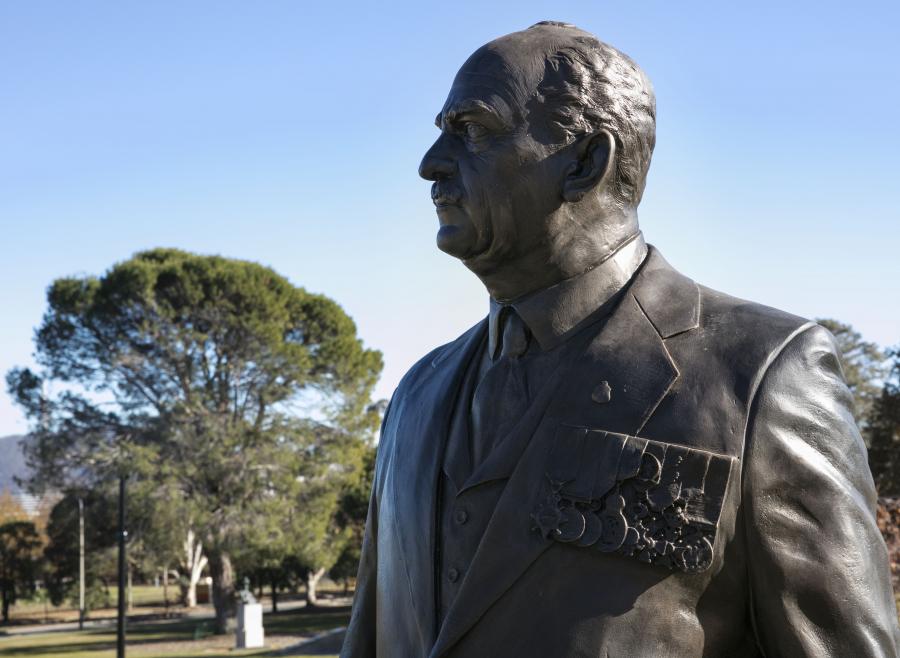
Sculptor Charles Robb has spent months living and working with one of Australia’s greatest military and civic leaders.
A leading portrait artist, Robb wrangled with just over half a tonne of clay to create a likeness of General Sir John Monash for the Australian War Memorial in Canberra to mark the 100th anniversary of the battle of Hamel.
“We were constantly humbled and excited by the honour of being able to contribute – and to contribute in such an enduring way – to the way in which Monash is remembered,” Robb said.
“I’ve always been really interested in the language of public art, and particularly memorial art. And the thing that was constantly on our minds was what would Monash think? Would he be happy with this? Is this dignified? Is this suitable? Is this the way he would want to be remembered? And that’s a very different … and important set of questions than the more simple or straightforward questions about what works visually and sculpturally within a composition.”
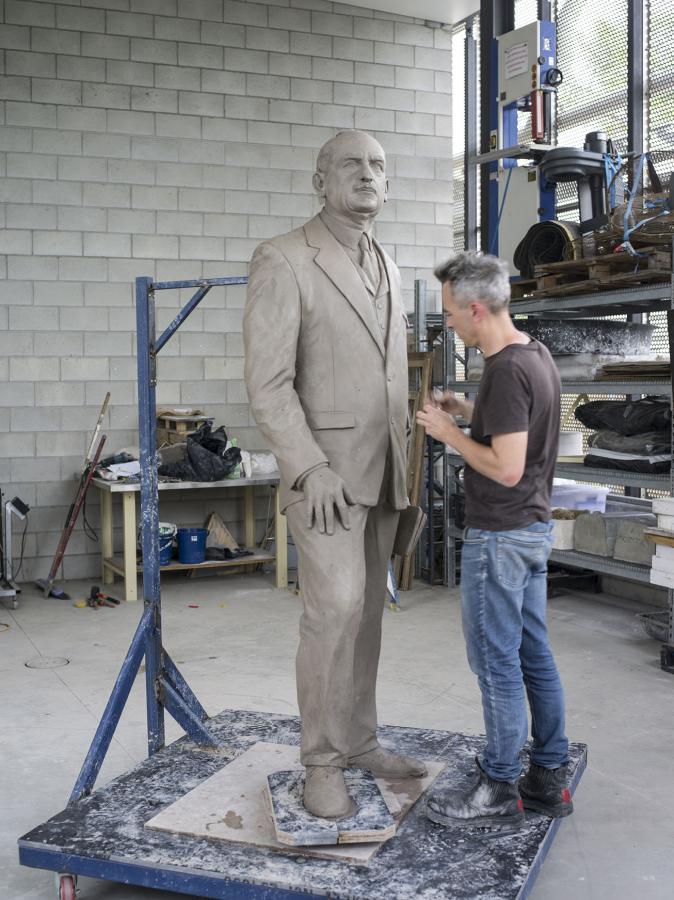
Sculptor Charles Robb at work creating the likeness of General Sir John Monash.
Working in collaboration with award-winning poet Sarah Holland-Batt, Robb was commissioned by the Memorial to create a bronze sculpture commemorating Monash’s legacy as an outstanding general during the First World War, while also highlighting his distinct character and his dedication to civic duty after the war.
“It was a challenge that I was really excited to work on,” Holland-Batt said. “I’ve always been interested in the relationship between visual art and poetic language.”
Holland-Batt studied Monash’s writing and was inspired by poet and critic T.S. Eliot’s phrase, “the still point of the turning world”, to show Monash as a man who played a central and pivotal role in leading Australia’s war efforts.
“I absolutely loved reading Monash,” Holland-Batt said. “He’s just so elegant and so erudite. There were so many phrases that I had underlined or pulled out as potential text to use in the work that were poetic.”
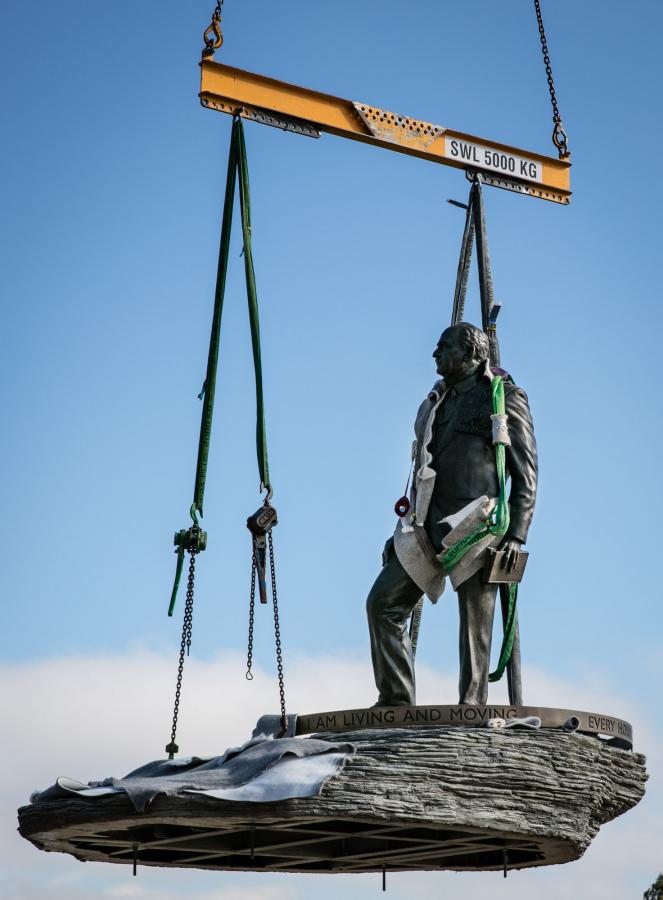
But one phrase stood out, and now Monash’s own words – ‘I am living and moving, every hour of the day and night, in the midst of the most tremendous events’ – are a prominent component of the sculpture.
“You really read his diaries and his letters and you get this sense of a great humanist stuck in the horror of the war,” she said.
“The way in which he managed his moral responsibilities with his individual fears and phobias, and the terror of being in charge, comes through so powerfully in the writing and the way in which he rose to that and had that fortitude to rise to the challenge.
“His works are so immensely poetic and elegant. He’s a really great rhetorician and writer and thinker and scholar, as well as a great strategist and commander, and I was just so pleased there was such a bounty of beautiful language to work with – I loved it.”
For the figure itself, Robb surrounded himself with images of Monash to help create him a likeness that signified his vision and leadership.
“He was quite a tricky subject,” Robb said. “His face changed quite considerably … and finding the point that summed up each of the periods of his life was actually part of the challenge of modelling.”
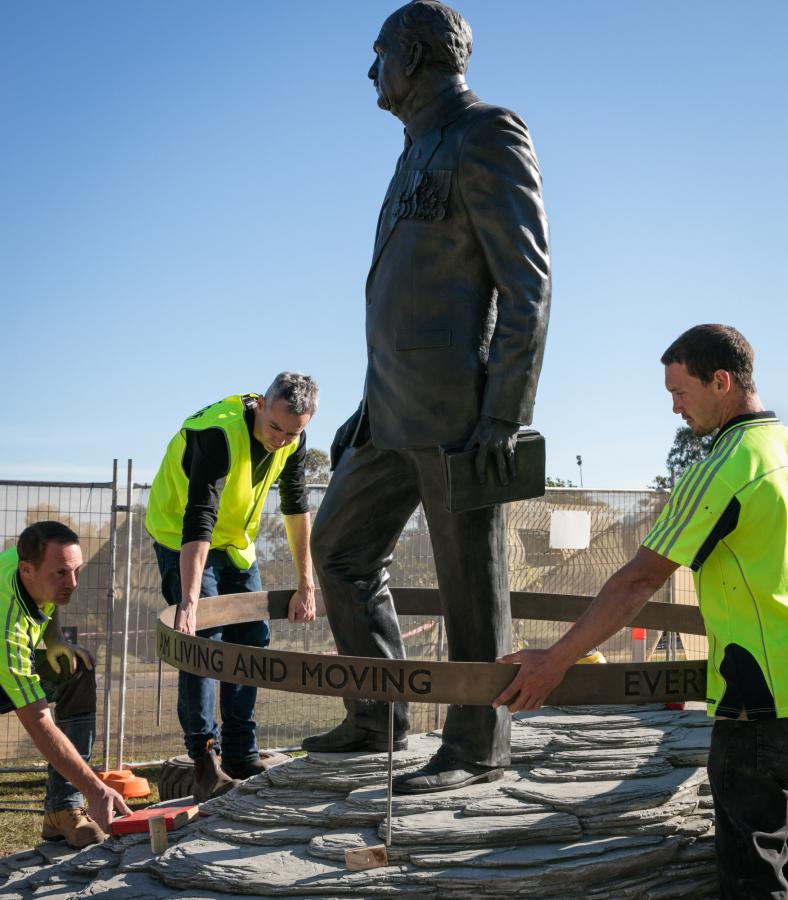
In his left hand, Monash holds a notebook which alludes to his intellectual legacy as a moving and humane chronicler of the war, as well as one of its greatest tacticians and leaders.
“This is reference to his literary dimension,” Robb said. “But it could be a field notebook, it could be a diary, or it could be a book of poetry. It’s got that open-ended reference to a whole range of the different intellectual spirit that he really brought to the various tasks that he applied himself to, including the war.”
Monash is gazing outward on top of a plinth cast in cement to resemble a large outcrop of striated sedimentary rock, which functions both as a testament to Monash’s intellectual strength and fortitude, but also to the burden of responsibility that fell to him during his service and public life. The concrete plinth also gestures towards Monash’s pioneering work as an engineer in introducing reinforced concrete as a material in construction.
“We wanted him to have poise, but not to be haughty or arrogant,” Robb said.
“And the thing that unifies the work is the plinth rock structure which both suggests the stability of the terrain and gives him that monumental impact. It also suggests the veneers and layers of experience and character which I think are part of the Monash story.
“I think the magnitude of the commission and the significance of Monash as a subject is actually something that you almost have to try not to think too much about – because you don’t want to put yourself under too much pressure. You have to detach yourself a little bit, but there is a significance to it, and that was driven home when we were talking with the wonderful people who were doing the install. I was commending them on how much care they were taking, and they said, ‘Well, it’s Monash.’ And I realised that this thing that had been a lump of clay, which turned into silicon and then turned into bronze, was now a Memorial work – this was now Monash… and it was quite a beautiful moment.
“It’s lovely [to see it here at the Memorial]. It’s a fine accolade, and it’s something that we’ve never taken for granted. This is the sort of gig really that comes once in a lifetime.”
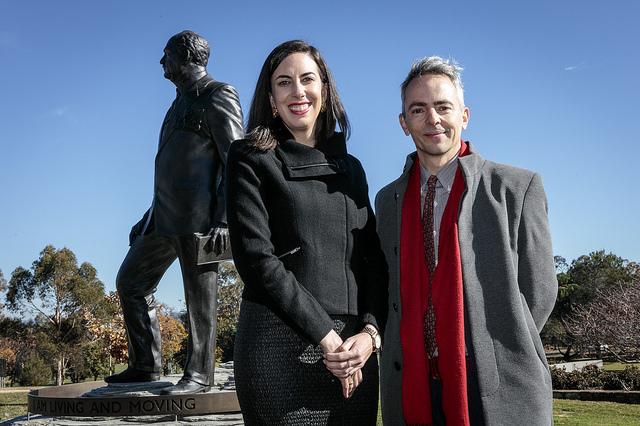
Poet Sarah Holland-Batt and sculptor Charles Robb.